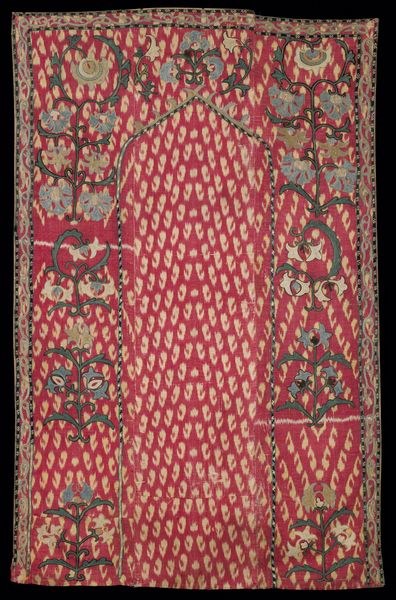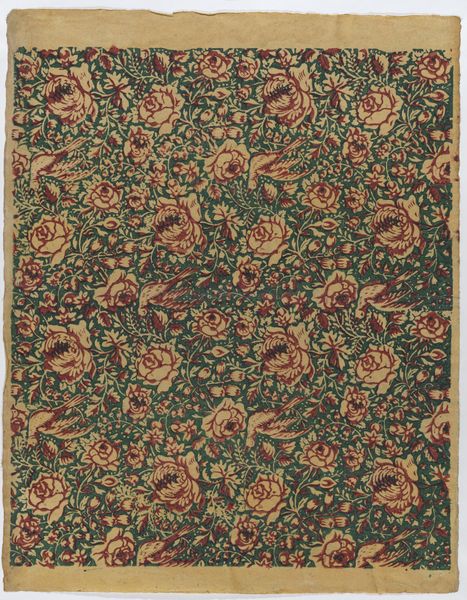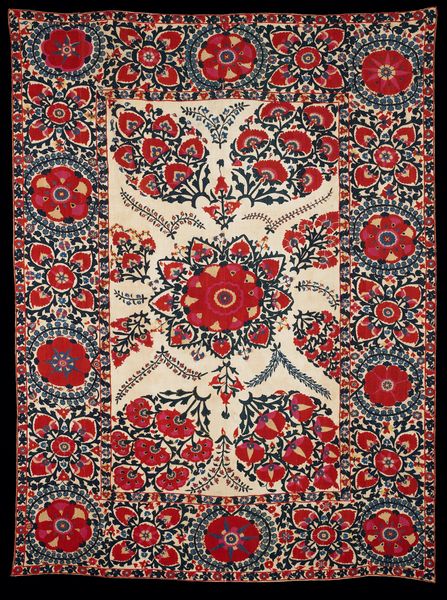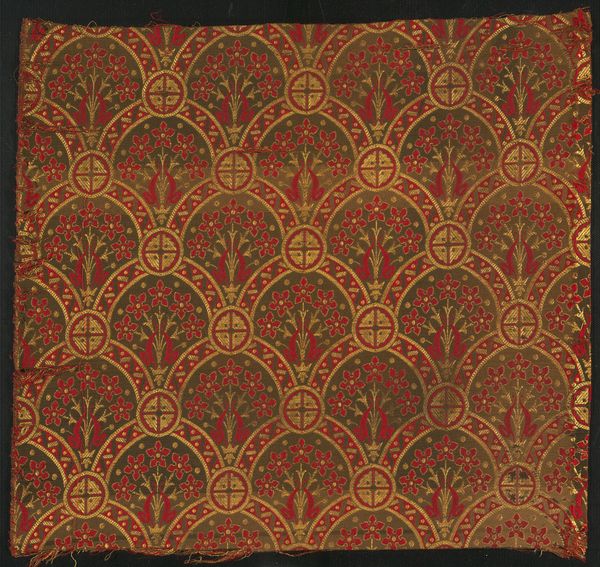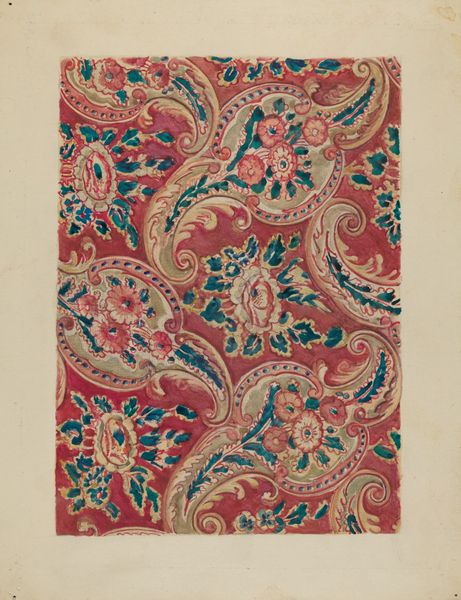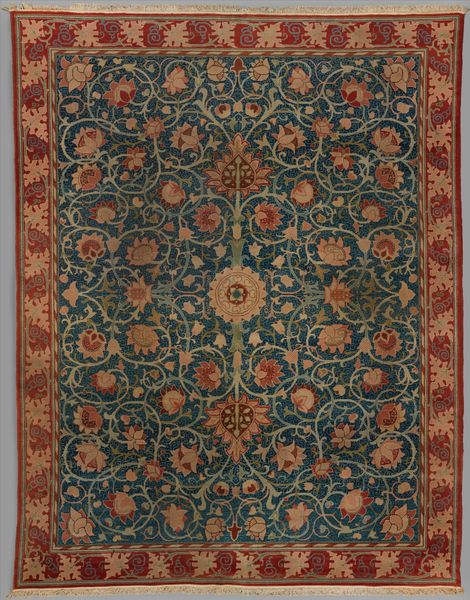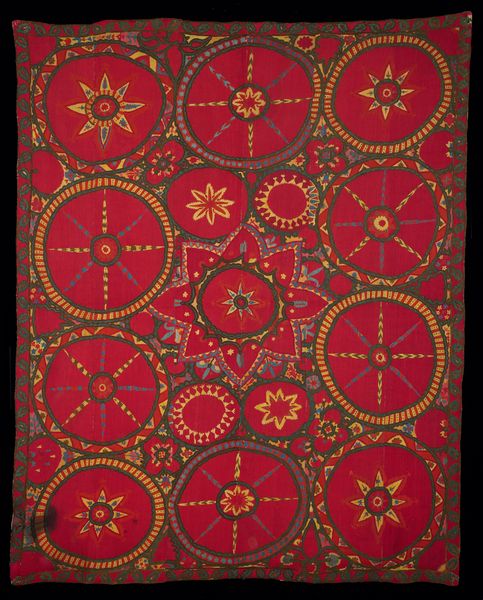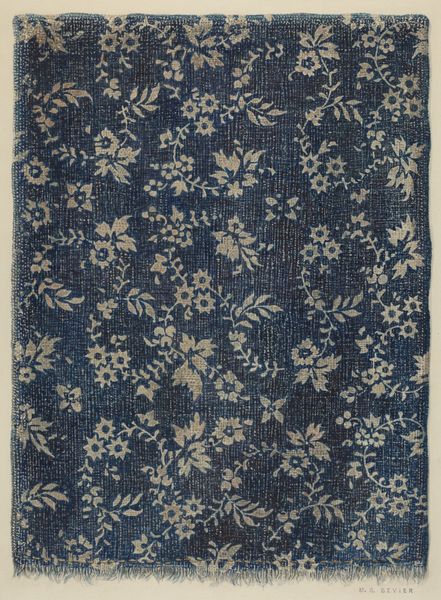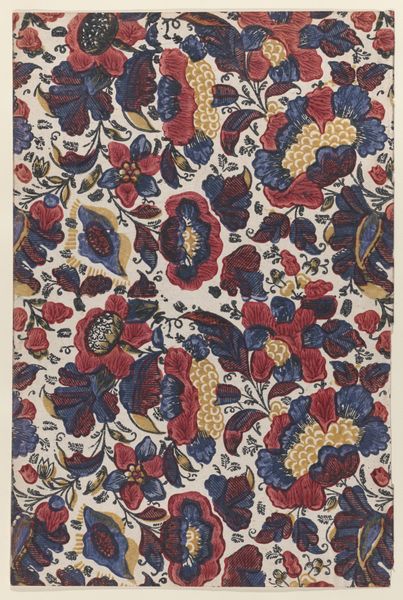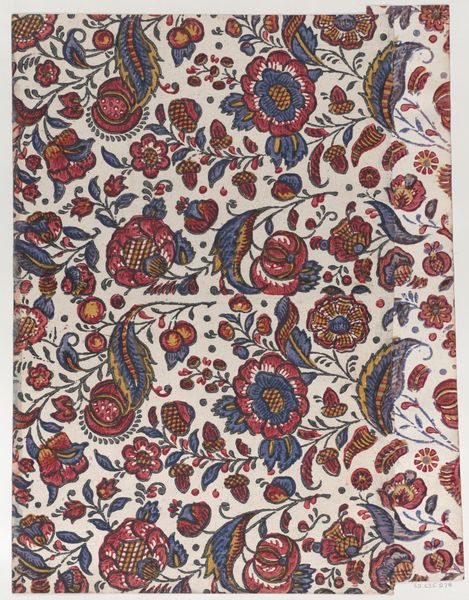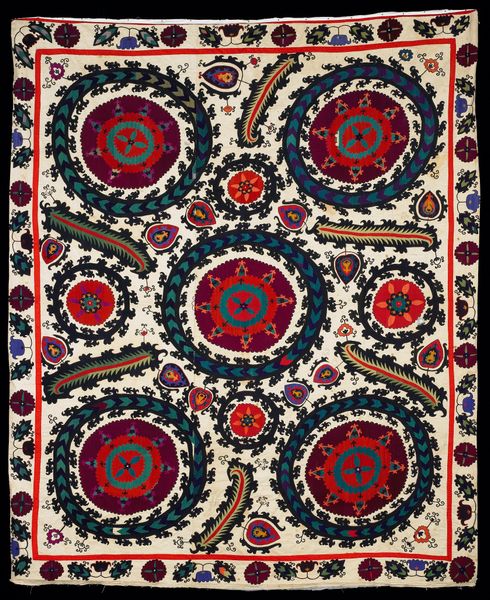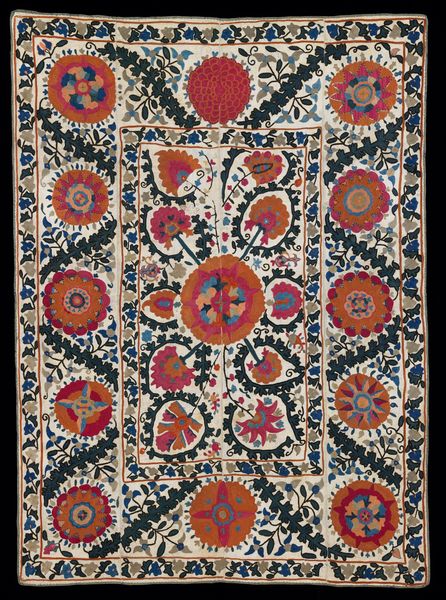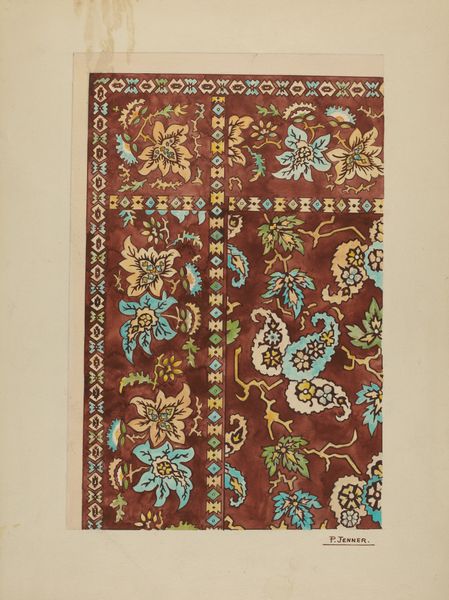
textile
#
textile
#
geometric pattern
#
geometric
#
islamic-art
Dimensions: 92 x 76 in. (233.68 x 193.04 cm)
Copyright: Public Domain
This Suzani is a large, embroidered textile likely made in Uzbekistan. Such textiles were central to major life events, especially marriage. This one could have been part of a bride's dowry. The bold floral patterns, dominated by red and blue, are not accidental. The color red often signifies fertility and life, while blue can symbolize peace and tranquility. These aren't just decorative choices; they're visual prayers for the couple's future. The anonymous nature of the artist is also key. Suzanis were typically made by women within a family or community. Their collective effort reflects a communal blessing, and their anonymity underscores the emphasis on shared cultural values over individual expression. Understanding Suzanis requires exploring Central Asian social history and textile production. Scholarly articles, museum collections, and ethnographic studies can offer insight into their cultural significance. Recognizing art's deep roots in social context is crucial for interpretation.
Comments
No comments
Be the first to comment and join the conversation on the ultimate creative platform.
